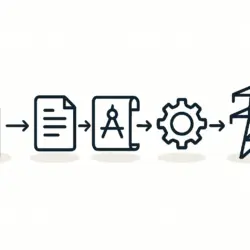Belarus is shifting its energy strategy to focus on small-scale solar installations and repairing wind power stations in 2025. This move is part of the country’s broader efforts to diversify its energy sources and reduce dependence on traditional fossil fuels.
Small-Scale Solar Installations for Belarus renewable energy
The Belarusian government has announced plans to prioritize small-scale solar installations. This initiative aims to encourage individual households and small businesses to invest in solar panels, thereby decentralizing energy production and increasing energy independence at the community level. The government is expected to provide incentives such as tax breaks and subsidies to make solar installations more affordable.
Solar energy has been gaining popularity worldwide due to its renewability and decreasing costs. In Belarus, the potential for solar power is significant. While a country like Moldova sees an average output potential for solar panels of 3.4 kWh/kWp daily (1241 kWh/kWp yearly) as detailed in the Moldova Solar Panel Manufacturing Report, Belarus can also leverage solar, especially in rural areas where large tracts of land are available for solar farms. However, the focus on small-scale installations is seen as a way to involve more citizens in the green energy transition and reduce the strain on the national grid.
The government has also been working on creating a favorable regulatory environment for solar energy. This includes streamlining the permitting process for installing solar panels and ensuring that surplus energy can be easily sold back to the grid. This “net metering” system will allow solar panel owners to offset their electricity costs, making the investment more attractive.
Wind Power Repairs and Belarus renewable energy
In addition to the focus on solar energy, Belarus is also planning to repair and upgrade its existing wind power infrastructure. Wind energy is another key component of the country’s renewable energy strategy, and repairing aging wind turbines is essential to maintaining and increasing the contribution of wind power to the national energy mix.
The government has identified several wind power stations that require urgent repairs. These repairs will focus on replacing outdated components, improving efficiency, and ensuring that the turbines operate at full capacity. The goal is to extend the lifespan of these installations and increase their electricity output.
Belarus has a moderate wind energy potential, particularly in the western and northern regions of the country. By investing in the repair and maintenance of existing wind farms, the government hopes to maximize the use of this resource and reduce the country’s reliance on imported fossil fuels.
Broader Energy Strategy for Belarus renewable energy
The shift towards renewable energy sources is part of Belarus’s broader energy strategy, which aims to reduce greenhouse gas emissions and meet international climate commitments. The government has set ambitious targets for increasing the share of renewable energy in the national energy mix, and these efforts are seen as crucial to achieving those goals.
In addition to solar and wind energy, Belarus is also exploring other renewable energy sources such as biomass and hydropower. The country has a significant amount of agricultural and forest residues that can be used to produce biomass energy. Hydropower, though limited, also offers opportunities for small-scale energy production in certain regions.
The government’s focus on small-scale solar installations and wind power repairs is expected to create new jobs in the renewable energy sector. This will include jobs in the installation and maintenance of solar panels, as well as in the repair and operation of wind turbines. The growth of this sector is seen as a way to boost the economy while also contributing to environmental sustainability.
Challenges Ahead for Belarus renewable energy
Despite the positive outlook, there are challenges that Belarus must overcome to successfully implement its renewable energy strategy. One of the main challenges is the availability of financing for renewable energy projects. While the government has promised incentives, the initial investment required for solar and wind installations can still be a barrier for many households and businesses.
Another challenge is the need for further development of the national grid to accommodate the increasing share of renewable energy. The grid must be modernized to handle the intermittent nature of solar and wind power, ensuring a stable and reliable supply of electricity.
Public awareness and acceptance of renewable energy technologies are also important factors in the success of this strategy. The government will need to invest in educational campaigns to inform citizens about the benefits of renewable energy and how they can participate in the transition.
Belarus’s focus on small-scale solar installations and wind power repairs in 2025 marks a significant step towards a more sustainable and diversified energy future. While there are challenges to overcome, the government’s commitment to renewable energy is clear. With the right policies and investments, Belarus has the potential to become a leader in renewable energy in the region, contributing to global efforts to combat climate change.



